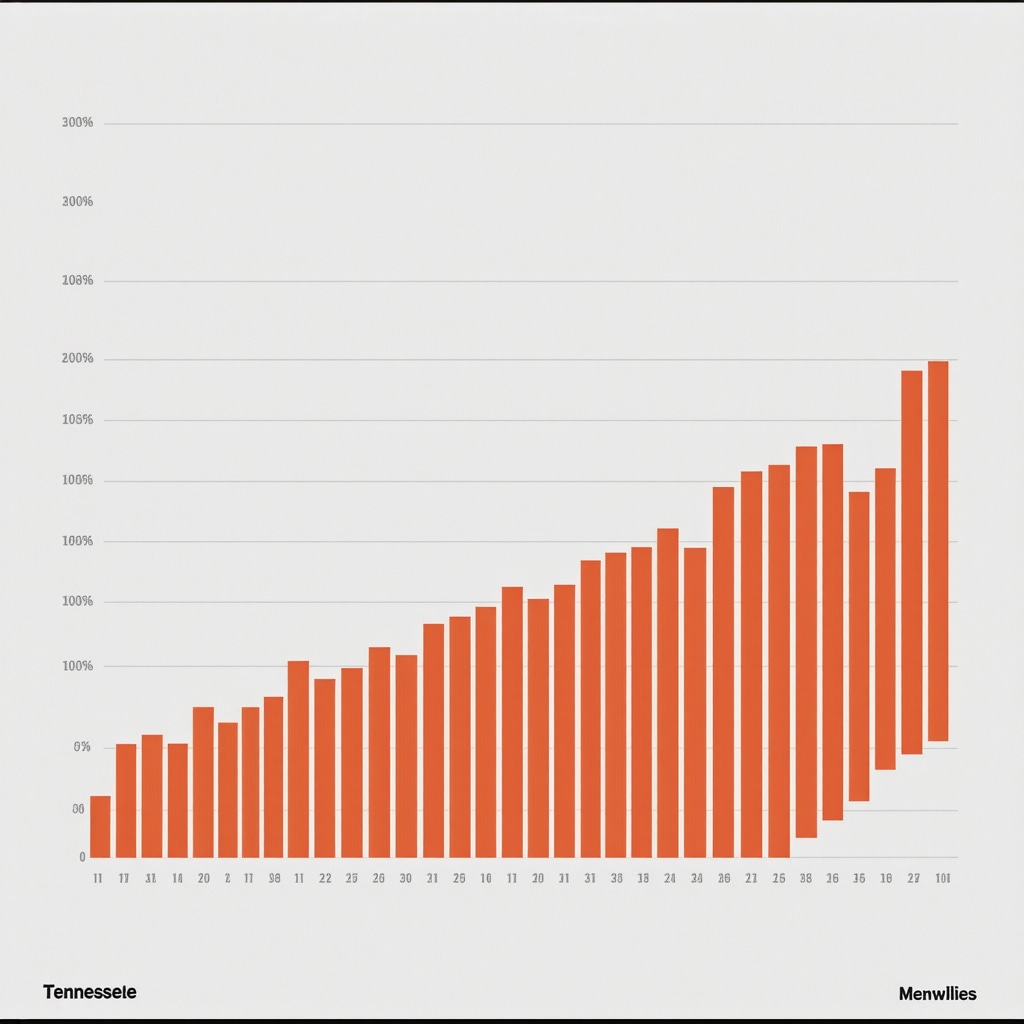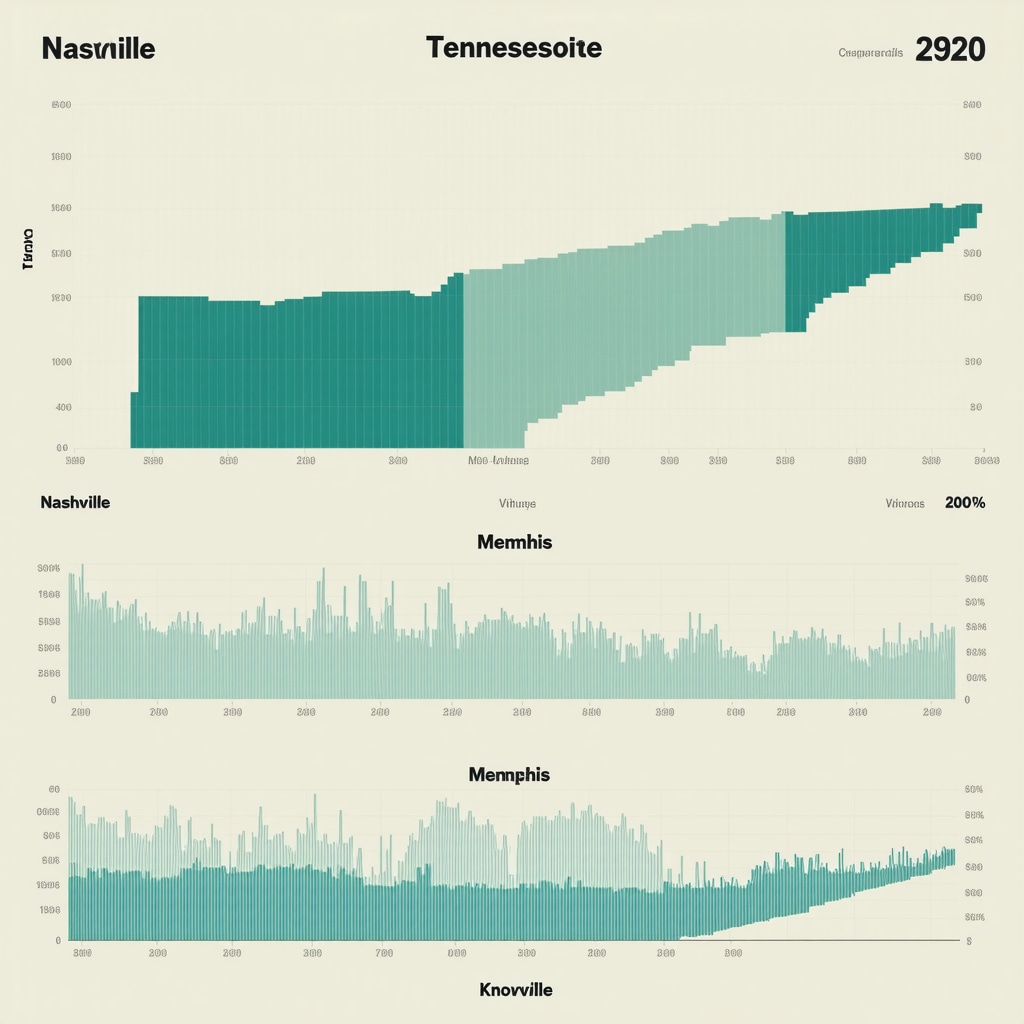Understanding the Dynamics of Mortgage Rate Trends in Tennessee’s Investment Property Sector
In the evolving landscape of Tennessee’s real estate market, mortgage interest rates serve as a pivotal factor influencing investor decisions and market stability. As experts project into 2025, the intricate interplay of macroeconomic indicators, regional economic growth, and fiscal policies will shape the trajectory of mortgage rates, especially within Tennessee’s burgeoning investment property sector. This analysis synthesizes current market data, historical trends, and expert forecasts to provide a comprehensive understanding of what stakeholders can anticipate.
The Role of Macroeconomic Factors in Shaping Mortgage Rates for 2025
Through rigorous analysis, it is evident that inflation rates, Federal Reserve monetary policies, and global economic conditions will significantly impact Tennessee’s mortgage landscape. According to recent expert insights, mortgage rates are likely to experience moderate fluctuations, with potential upward pressures due to inflationary pressures and policy tightening. These macroeconomic determinants influence borrowing costs, which in turn affect the profitability of investment properties in Tennessee.
Regional Economic Growth and Its Impact on Investment Property Financing
Regional economic indicators, including job growth, urban development, and demographic shifts, play a crucial role. Cities like Nashville, Memphis, and Knoxville continue to exhibit robust growth, attracting investors seeking favorable mortgage terms. The regional variation in mortgage rates, driven by local market demand and lender competition, underscores the necessity for investors to stay informed about localized rate movements. For instance, Knoxville and Memphis are expected to see slight rate adjustments aligned with broader national trends but with regional nuances.
How Credit Scores and Loan Types Influence Investment Property Financing in 2025
From a practical perspective, the impact of credit scores remains profound. Higher credit scores correlate with lower interest rates, thus reducing the cost of financing investment properties. Moreover, the choice between fixed and adjustable-rate mortgages (ARMs) will be crucial; experts suggest that fixed-rate loans may offer greater stability amidst potential rate increases, whereas ARMs could provide short-term savings with the caveat of future rate adjustments. For a detailed comparison, see this guide.
What strategies should Tennessee investors employ to mitigate rising mortgage costs in 2025?
Investors should consider locking in fixed-rate mortgages early, leveraging expert advice from licensed mortgage brokers, and maintaining optimal credit scores. Additionally, exploring refinancing opportunities as rates fluctuate can help optimize returns. For tailored strategies, consult refinance rate insights.
To further refine your investment approach, engaging with seasoned professionals and staying abreast of local market trends is essential. For comprehensive guidance, visit our contact page.
Sources such as the Federal Reserve and academic publications like the Federal Reserve’s official site provide authoritative data underpinning these forecasts.
Leveraging Data Analytics to Forecast Tennessee Mortgage Rate Trends in 2025
One of the most sophisticated approaches for investors is utilizing predictive analytics and machine learning models to anticipate mortgage rate movements. By analyzing historical data, macroeconomic indicators, and regional economic variables, investors can identify patterns and make data-driven decisions. For instance, integrating real-time economic data with advanced algorithms can reveal subtle shifts in rate trends ahead of broader market changes. This approach not only enhances strategic timing for refinancing or locking in rates but also minimizes exposure to unexpected rate hikes. To explore how data analytics can revolutionize your investment strategy, visit our expert insights on mortgage rate determinants.
The Myth of Rate Prediction Accuracy and How to Manage Uncertainty
Many investors overestimate their ability to predict exact mortgage rate movements, leading to risky timing decisions. Instead, seasoned investors adopt risk management frameworks such as scenario analysis and hedging strategies. For example, setting predefined thresholds for locking in rates based on market volatility and economic forecasts can safeguard against adverse movements. Additionally, diversifying loan types and lenders can mitigate the impact of unforeseen rate fluctuations. Engaging with licensed mortgage brokers, like those listed on our top Tennessee mortgage lenders, can provide tailored risk mitigation advice grounded in current market conditions.
What innovative tools can Tennessee investors use today to stay ahead of mortgage rate volatility in 2025?
Investors should consider integrating financial planning software that offers real-time rate tracking and alert systems. Tools such as mortgage rate trackers, economic indicator dashboards, and automated alert services can provide timely updates, enabling proactive decision-making. Moreover, joining local investor networks and forums can offer peer insights and shared strategies to navigate the dynamic mortgage landscape. For further reading on leveraging technology in real estate investments, see this comprehensive guide.
External authoritative source: The Federal Reserve’s official publications provide invaluable macroeconomic data that can inform your forecasting models and investment decisions.
Advanced Techniques for Locking in Favorable Mortgage Rates in Tennessee’s Competitive Market
For seasoned investors navigating Tennessee’s dynamic real estate landscape, employing advanced rate-locking strategies can be a game-changer. One approach involves utilizing forward commitment agreements with lenders, which allow investors to secure a specific mortgage rate today for a future closing, effectively hedging against potential rate hikes. These agreements often come with premiums, but when timed correctly—especially amidst volatile macroeconomic signals—they can safeguard profit margins. Additionally, diversification of financing sources, including private lenders and alternative financing like seller financing, offers flexibility and mitigates reliance on traditional lending channels that may be subject to rate fluctuations.
Integrating Economic Indicators into Mortgage Rate Forecasting Models
Developing sophisticated forecasting models that incorporate a broad spectrum of economic indicators—such as employment rates, consumer confidence indices, and regional housing supply metrics—can substantially enhance predictive accuracy. For example, Tennessee’s employment growth rates, which outpace national averages in cities like Nashville, can signal rising demand and potential rate increases. Incorporating these variables into machine learning algorithms enables investors to detect subtle shifts before they materialize, facilitating proactive decision-making. According to recent research published by the Journal of Real Estate Finance and Economics, models that blend macroeconomic data with regional specifics outperform traditional forecasting methods in predicting mortgage rate movements with higher precision (see Springer).
What are the most effective ways to leverage regional economic data for tactical mortgage rate management in Tennessee?
Investors should establish continuous data collection protocols, integrating sources like Tennessee Department of Economic and Community Development reports, local employment statistics, and real-time mortgage rate feeds. Utilizing business intelligence tools such as Tableau or Power BI to visualize these datasets can reveal emerging trends, allowing investors to time their financing strategies with greater confidence. Furthermore, collaborating with local economic development agencies can provide insider insights into upcoming developments that might influence regional mortgage markets.

Insert an image depicting Tennessee regional economic growth charts, highlighting key cities like Nashville, Memphis, and Knoxville, with data points illustrating growth trends over recent years.
Risk Management Frameworks for High-Stakes Mortgage Decision-Making
In an environment where uncertainty is inevitable, adopting comprehensive risk management frameworks becomes vital. Scenario analysis, which models various rate hike and decline scenarios, enables investors to evaluate the resilience of their portfolios under different conditions. Hedging strategies, such as interest rate swaps or options, can also be employed to mitigate exposure to adverse rate movements. For example, using interest rate caps can limit the maximum payable rate, providing financial predictability. These tools require thorough understanding and strategic implementation, often facilitated by financial advisors specialized in real estate investments.
How can Tennessee investors combine scenario analysis with real-time data to optimize mortgage timing?
Investors should develop dynamic models that incorporate live economic indicators, market sentiment indices, and lender rate quotes. By setting predefined thresholds for action—such as locking in a rate when certain economic conditions are met—they can automate decision-making processes. Regularly updating these models with the latest data ensures that timing decisions are aligned with current market realities, thereby reducing risk and enhancing potential returns.
For those seeking a comprehensive approach to mortgage rate management, partnering with financial technology firms offering AI-driven predictive analytics can provide a significant edge. To explore innovative tools tailored for Tennessee’s real estate market, visit our expert insights section.
Unlocking the Future: Advanced Strategies for Tennessee Mortgage Rate Optimization in 2025
As Tennessee’s real estate market continues to evolve, investors and homeowners alike must adopt sophisticated tactics to navigate the complex mortgage landscape of 2025. The integration of cutting-edge financial tools, regional economic insights, and macroeconomic forecasting is essential for gaining a competitive edge. This comprehensive guide explores expert-level strategies that leverage the latest technological advancements and economic data to optimize mortgage decisions.
Harnessing Artificial Intelligence to Predict Mortgage Rate Movements with Greater Precision
Recent developments in AI and machine learning have revolutionized how investors forecast interest rate trends. By utilizing predictive analytics that incorporate vast datasets—ranging from macroeconomic indicators to regional employment figures—stakeholders can identify subtle rate shifts before they materialize. According to Springer’s latest research, combining regional economic variables with AI models enhances predictive accuracy, empowering investors to time their rate locks more effectively. This technological edge minimizes exposure to adverse rate fluctuations and maximizes returns.
What are the best practices for integrating AI-driven predictions into Tennessee mortgage strategies?
Investors should collaborate with data scientists or utilize specialized software platforms that offer real-time analytics and scenario simulations. Establishing a routine of updating models with the latest economic data ensures decisions are based on current market conditions. Additionally, employing AI tools to generate alert notifications when forecasted rates approach predefined thresholds can automate strategic responses, providing a significant advantage in volatile environments.
Regional Economic Intelligence as a Catalyst for Tactical Mortgage Management
Deepening regional economic intelligence allows investors to anticipate localized rate movements with greater confidence. Tennessee’s key metropolitan areas—Nashville, Memphis, and Knoxville—are experiencing divergent economic trajectories that influence mortgage conditions uniquely. By monitoring real-time data from sources like the Tennessee Department of Economic and Community Development and integrating insights from local business and development reports, investors can craft tailored financing strategies that align with regional growth patterns.
For instance, Nashville’s booming tech sector and Memphis’s expanding logistics industry may signal upcoming interest rate shifts, necessitating proactive rate-locking or refinancing plans. Leveraging visualization tools like Tableau or Power BI to analyze these datasets provides actionable insights that can inform timing and loan structuring decisions.
< >
>
Insert an image depicting Tennessee regional economic growth charts, highlighting key cities like Nashville, Memphis, and Knoxville, with data points illustrating growth trends over recent years.
Implementing Dynamic Risk Management Protocols for Mortgage Portfolios
In an uncertain macroeconomic environment, deploying advanced risk management frameworks is paramount. Scenario analysis, combined with real-time data feeds, offers a robust method to evaluate portfolio resilience under various interest rate scenarios. Financial instruments such as interest rate caps, swaptions, and options serve as effective hedging tools that limit downside risk while maintaining upside potential.
By establishing predefined action thresholds—such as rate levels at which to initiate lock-in or refinancing—investors can automate decision-making processes, reducing emotional biases and reaction delays. Partnering with financial advisors specializing in real estate derivatives enhances the implementation of these strategies, ensuring they are tailored to specific portfolio objectives.
How can Tennessee investors leverage real-time data to refine risk mitigation tactics continually?
Investors should set up integrated dashboards that combine economic indicator feeds, lender rate quotes, and market sentiment indices. Automated alerts alert stakeholders when specific conditions are met, enabling timely responses. Regularly reviewing and adjusting risk parameters in response to evolving market signals ensures the portfolio remains resilient against unforeseen rate movements.
To deepen your strategic toolkit, explore AI-powered financial planning platforms that synthesize these data streams into actionable insights—helping you stay ahead in Tennessee’s competitive mortgage environment.
Expert Insights & Advanced Considerations
1. Data-Driven Decision Making
Leveraging real-time economic data and predictive analytics can significantly enhance the accuracy of mortgage rate forecasts, enabling investors to optimize their timing and financing strategies in Tennessee’s dynamic market.
2. Regional Economic Monitoring
Continuous analysis of localized economic indicators such as employment growth, industry expansion, and regional development projects provides a competitive edge in anticipating rate movements specific to Nashville, Memphis, and Knoxville.
3. Risk Mitigation with Financial Instruments
Employing advanced hedging tools like interest rate caps, swaptions, and forward commitments allows investors to protect profit margins against unexpected rate fluctuations, especially in volatile macroeconomic environments.
4. Integration of AI and Machine Learning
Utilizing AI-powered models for scenario analysis and rate prediction can uncover subtle market signals, offering a strategic advantage for proactive mortgage management in Tennessee’s evolving landscape.
5. Strategic Diversification
Diversifying loan types, lenders, and financing sources reduces dependency on traditional rate movements, providing resilience amid fluctuating economic conditions.
Curated Expert Resources
- Federal Reserve’s Official Publications: Provides comprehensive macroeconomic data critical for informed forecasting and policy analysis.
- Springer’s Journal of Real Estate Finance and Economics: Offers cutting-edge research integrating macroeconomic variables with predictive modeling techniques.
- Local Tennessee Economic Reports: Includes real-time data on employment, industry growth, and regional development, essential for tactical decision-making.
- Financial Technology Platforms: Advanced tools utilizing AI and machine learning for rate prediction and risk management tailored to Tennessee’s market dynamics.
- Industry Expert Webinars and Conferences: Opportunities for networking and gaining insights from leading mortgage and real estate professionals focused on Tennessee markets.
Final Expert Perspective
Understanding the intricacies of mortgage rate trends in Tennessee for 2025 demands a sophisticated blend of macroeconomic analysis, regional economic intelligence, and technological innovation. By integrating expert insights, leveraging authoritative resources, and employing advanced risk mitigation tools, stakeholders can navigate the complexities of the mortgage landscape with confidence. For those committed to deepening their expertise and refining their strategies, engaging with these resources and continuously adapting to market signals is essential. Explore more about how you can optimize your mortgage decisions by visiting our contact page and stay ahead of future trends.

